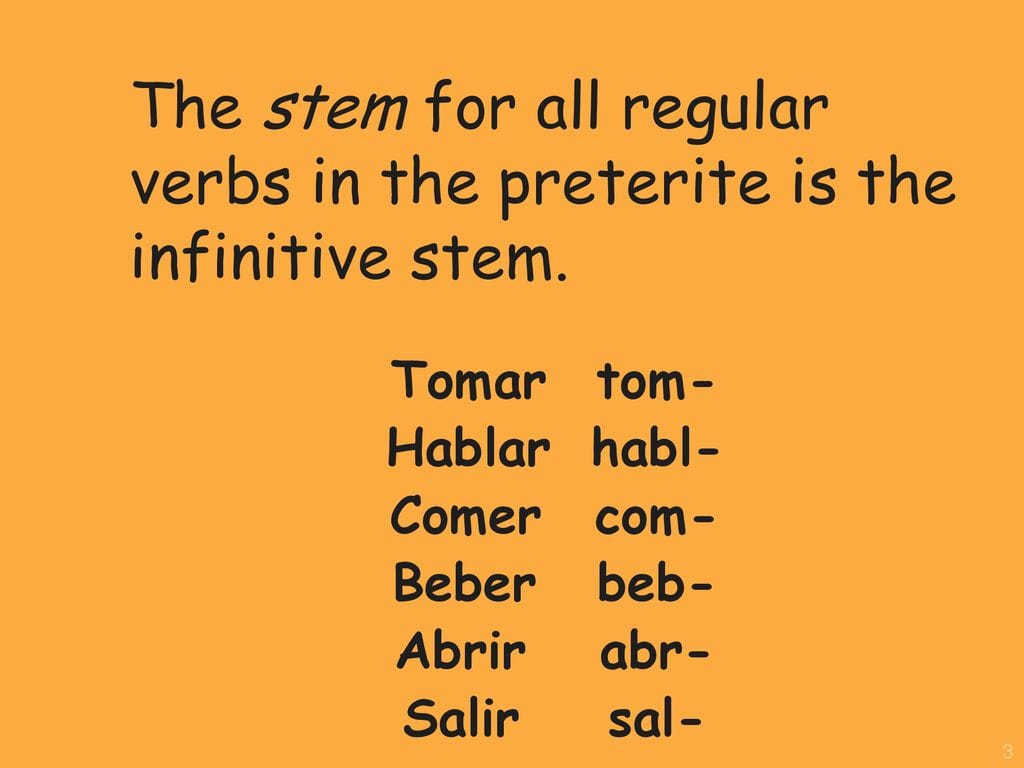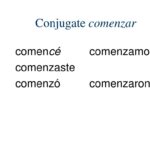Hey there, language lovers! Ready to conquer the Spanish preterite tense of tomar? This versatile verb, meaning “to take,” “to drink,” or even “to have,” unlocks a world of past-tense expressions. Let’s embark on this linguistic journey!
Decoding the Tomar Preterite
The preterite tense is your tool for expressing completed past actions. Tomar, being a regular -AR verb, follows predictable conjugation patterns, making it relatively straightforward to learn.
Conjugating Tomar
Here’s a breakdown of tomar in the preterite tense:
| Pronoun | Conjugation | Example | Possible Translation |
|---|---|---|---|
| Yo | tomé | Tomé un café. | I drank/had a coffee. |
| Tú | tomaste | Tomaste el tren. | You took the train. |
| Él/Ella/Usted | tomó | Él tomó una decisión. | He made a decision (literally, “took”). |
| Nosotros/as | tomamos | Tomamos unas fotos. | We took some photos. |
| Vosotros/as | tomasteis | Tomasteis un descanso. | You all took a break. |
| Ellos/Ellas/Ustedes | tomaron | Tomaron el autobús. | They took the bus. |
The endings change depending on the subject, indicating who performed the action. Context is crucial for understanding tomar‘s nuanced meanings.
Unveiling the Many Faces of Tomar
Tomar goes beyond simply taking something physically. Here’s a glimpse into its versatile nature:
- Tomar una bebida: To drink/have a beverage. Tomé un refresco. (I had a soda.)
- Tomar algo físicamente: To take an object. Tomé el libro de la mesa. (I took the book from the table.)
- Tomar una decisión: To make a decision. Ella tomó la decisión de mudarse. (She made the decision to move.)
- Tomar un medicamento: To take medicine. Tomé una aspirina para el dolor de cabeza. (I took an aspirin for the headache.)
- Tomar el sol: To sunbathe. Tomamos el sol en la playa. (We sunbathed on the beach.)
- Tomar un examen: To take an exam/test. Tomé un examen de español. (I took a Spanish exam.)
Mastering the Tomar Preterite: Tips and Tricks
- Immersion: Surround yourself with Spanish media.
- Practice: Use the preterite in conversations.
- Flashcards/Apps: Utilize tools for memorization.
- Create Examples: Formulate your own sentences.
- Context is Key: Pay attention to surrounding words.
Is Beber Irregular in the Preterite?
Let’s explore another common verb for “to drink”: beber. Is it regular or irregular in the preterite tense? The answer is: beber is a regular -er verb.
Conjugating Beber
| Pronoun | Beber (Preterite) | Example |
|---|---|---|
| Yo | bebí | Yo bebí agua. (I drank water.) |
| Tú | bebiste | Tú bebiste jugo. (You drank juice.) |
| Él/Ella/Usted | bebió | Él bebió leche. (He drank milk.) |
| Nosotros | bebimos | Nosotros bebimos refrescos. (We drank sodas.) |
| Vosotros | bebisteis | Vosotros bebisteis vino. (You all drank wine.) |
| Ellos/Ellas/Ustedes | bebieron | Ellos bebieron cerveza. (They drank beer.) |
The endings, just like with tomar, change according to the subject.
Preterite vs. Imperfect
The preterite describes completed past actions, while the imperfect describes ongoing or habitual past actions. For example, Bebí agua (I drank water – preterite) versus Bebía agua todos los días (I used to drink water every day – imperfect).
Beber in Action
- ¿Qué bebiste anoche? (What did you drink last night?)
- Bebieron mucho vino en la fiesta. (They drank a lot of wine at the party.)
While language evolves, current linguistic understanding suggests beber will likely remain regular.
How to Conjugate Ver in the Preterite?
Ver (to see), another regular -ar verb, is essential for describing past experiences. Let’s break down its preterite conjugation.
Conjugating Ver
Identify the Subject: Determine who performed the action.
Apply the Correct Ending:
| Subject | Ending |
|---|---|
| yo | -í |
| tú | -iste |
| él/ella/usted | -io |
| nosotros/as | -imos |
| vosotros/as | -isteis |
| ellos/as/ustedes | -ieron |
- Combine with the Stem: Add the ending to the stem v.
Ver in Context
- Yo vi una película anoche. (I saw a movie last night.)
- Tú viste el partido de fútbol? (Did you see the soccer game?)
- Ella vio a su amiga en el parque. (She saw her friend in the park.)
Potential Pitfalls
- Confusing ver with ir (to go).
- Using incorrect endings.
- Accidentally slipping into the present tense.
What is the Past Tense of Preterite?
The preterite is a past tense. It describes completed actions, like taking a snapshot of a moment in time. It differs from the imperfect, which portrays ongoing or habitual past actions.
Preterite vs. Imperfect: A Comparison
- Imperfect: Cantábamos (We were singing) – Ongoing action.
- Preterite: Cantamos (We sang) – Completed action.
Tomar in the Preterite: A Recap
Ayer tomé café. (Yesterday, I drank coffee.) This perfectly illustrates the preterite’s function: a single, completed action in the past.
Want to expand your knowledge of Spanish conjugation? Dive right into our tense imperfect conjugation guide. Also, check out our resource on tener imperfect conjugation for a deeper understanding of this essential verb form.
- Senior at What Age: Benefits & Eligibility Guide - March 29, 2025
- Unlocking Senior Benefits: How Old is a Senior? Your Complete Guide - March 29, 2025
- Master Russian Politeness:A Guide to Saying Please - March 29, 2025
















